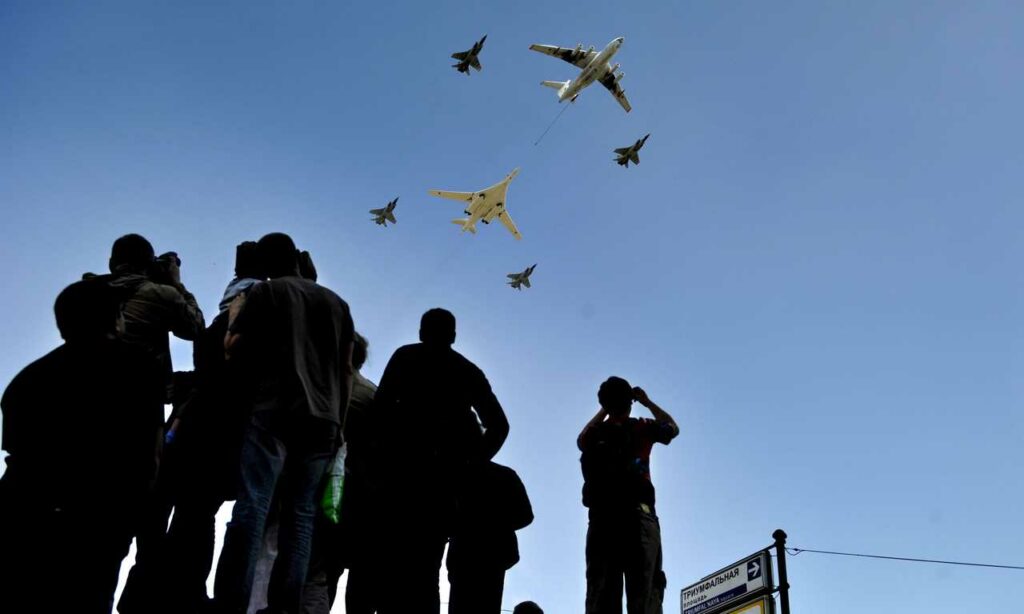7 May 2021, 05:00 | Dzmitry Wasserman*, Sydsvenskan

Every year on May 8 or 9 most European countries celebrate the anniversary of the end of the war in Europe and the onset of long-awaited peace. Belarus and Russia are celebrating Victory Day at the same time. At first glance the difference may appear to be small but, in fact, it is much bigger than it seems. If you listen to Lukashenko’s and Putin’s propaganda, it was not peace that came to Europe in 1945 but, rather, a pause, and Belarus and Russia continue to struggle with Hitler’s heirs, where new countries or groups are assigned to play the roles of these heirs depending on the political situation at the given moment.
Back in Soviet times a theory was created that said that any time European countries desire national independence it could be tied to Nazism. Stalin promised the peoples of Europe a communist melting pot where everyone would be under the red banner and would join the Soviet Union which was “united forever by the Great Russia” (to quote the Soviet anthem).
Hitler’s scenario of European expansion looked different. According to him, the European nations were to become vassals of Germany, while retaining their national symbols and national identity. As a proponent of “racial purity” Hitler did not want to mix enslaved peoples.
Soviet propaganda created a false duality between these two alternatives, where anyone who did not want to join the Soviet melting pot was a nationalist (like Hitler), who wanted to use national symbols (as under the Nazi occupation) and was an enemy of the USSR and, therefore, Nazi ally.
It is ironic that Soviet rhetoric used the term “fascists” to refer to the Nazis because Stalin, who had flirted with national feelings of European peoples after Germany’s attack on the USSR, declared that Hitler was not a nationalist, as he was an imperialist. After the war, Hitler was again declared a nationalist, but the term fascism had taken root by then.
Depending on the political situation, members of the anti-Soviet underground in the occupied countries, fighters for democracy in Eastern Europe or governments of Western European countries were declared “fascists” (or “Nazis”). In the late 1980s and early 1990s, anti-fascist rhetoric was used against the Baltic independence movement. After the overthrow of the pro-Russian regime in Ukraine, the Russian propaganda declared Ukrainians to be heirs of the fascists.
In Belarus, the Lukashenko regime declared the national white-red-white flag, which had been the state flag before the establishment of the dictatorship and has become the symbol of the democratic movement, to be fascist. This despite the fact that the creator of the flag, Claudius Duzh-Dushevsky, was a prisoner of a Nazi concentration camp in Kovno for refusing to cooperate with the Nazis and hiding Jews. In the rhetoric used by Lukashenko’s propaganda, the democratic opposition demanding free elections “is marching under Nazi banners”. Moreover, as the relationship with Poland is deteriorating, the Poles have been declared heirs of the Nazis. And now the leaders of the Belarusian Poles are in prison for “justifying the genocide of the Belarusian people” because they organized an exhibition about the activities of the post-war anti-communist underground.
While propaganda continues to assert that Nazis are all nationalists who are against the USSR, more and more voices in Belarus and Russia have been saying that Hitler was not such a bad ruler before he attacked the USSR. At the beginning of his political career, the dictator of Belarus Lukashenko said:
The infamous Adolf Hitler in Germany did not only do bad things in Germany. The German order had been shaping over centuries and reached its highest point under Hitler. It matches our view of the presidential republic and the role of a president in it.
In February of this year, blogger Aliaksandr Holikau, speaking on the CTV Belarusian state channel (where, naturally, any peep requires the regime’s approval), spoke about Nazi atrocities and the executions of civilians, concluding “I support unpopular, undemocratic forceful actions to keep order… Nothing but iron discipline will enable us to create our own German Mercedes in Belarus… We will create our own Germany with German standards,” he concluded.
In Russia, one of the main Kremlin propagandists, Vladimir Solovyov, shot a film extolling Benito Mussolini that was screened on the Rossiya state TV channel. Igor Molotov, who works at Russia Today, another state television channel, reviewed the film. “Mussolini was a brilliant man. He showed the world a third path, which Russia is partly following today,” Molotov wrote. Then in February of this year, the above mentioned Solovyov was praising the courage of Adolf Hitler on state television, and then immediately declared the imprisoned opposition leader Alexei Navalny to be a Nazi, a coward unworthy of his teacher [Adolf Hitler].
Every year the victory parades on 9 May in Minsk and Moscow are becoming more magnificent, the “anti-fascist” rhetoric more hysterical and the laws against the “rehabilitation of Nazism” more and more repressive. Car stickers saying “On to Berlin” and “We can do a repeat of 1941–1945” are becoming more and more common in Russia.
Dictatorial regimes prepare those who are still susceptible to propaganda to go to war with those whom they have declared to be the heirs of the fascists: democrats, opposition members and disobedient neighbors.
*Dzmitry Wasserman is a volunteer at the People’s Embassy of Belarus in Sweden. The network of People’s Embassies of Belarus was created by the Belarusian diaspora to protect the interests of Belarusians after Lukashenko’s dictatorship lost its legitimacy due to grossly rigged presidential elections on 9 August 2020.